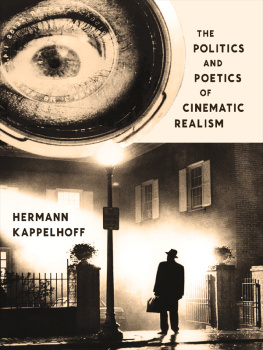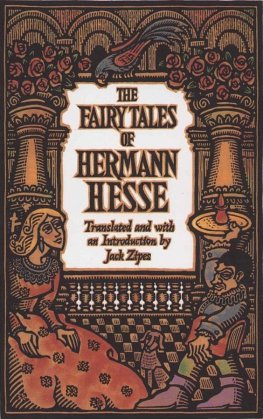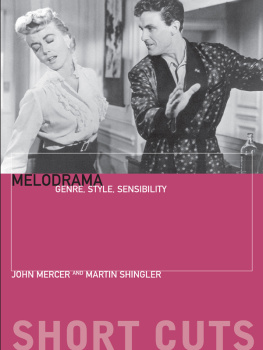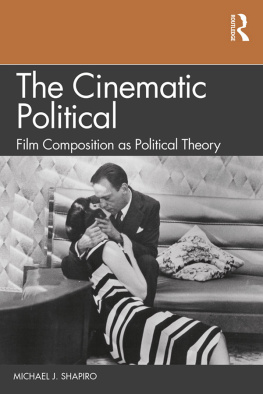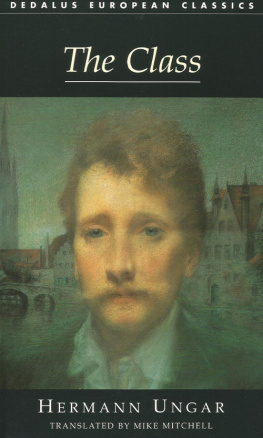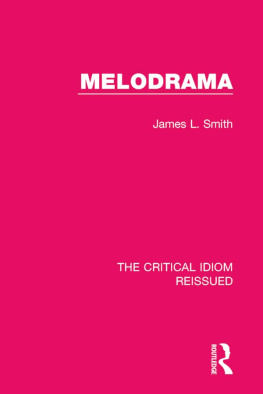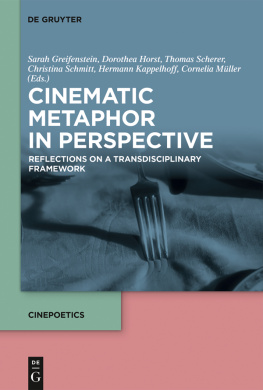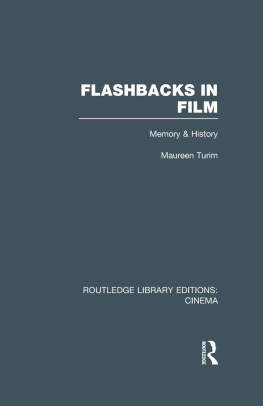THE POLITICS AND POETICS OF CINEMATIC REALISM
COLUMBIA THEMES IN PHILOSOPHY, SOCIAL CRITICISM, AND THE ARTS
COLUMBIA THEMES IN PHILOSOPHY, SOCIAL CRITICISM, AND THE ARTS LYDIA GOEHR AND GREGG M. HOROWITZ, EDITORS
ADVISORY BOARD
CAROLYN ABBATE
J. M. BERNSTEIN
EVE BLAU
T. J. CLARK
ARTHUR C. DANTO
JOHN HYMAN
MICHAEL KELLY
PAUL KOTTMAN
Columbia Themes in Philosophy, Social Criticism, and the Arts presents monographs, essay collections, and short books on philosophy and aesthetic theory. It aims to publish books that show the ability of the arts to stimulate critical reflection on modern and contemporary social, political, and cultural life. Art is not now, if it ever was, a realm of human activity independent of the complex realities of social organization and change, political authority and antagonism, cultural domination and resistance. The possibilities of critical thought embedded in the arts are most fruitfully expressed when addressed to readers across the various fields of social and humanistic inquiry. The idea of philosophy in the series title ought to be understood, therefore, to embrace forms of discussion that begin where mere academic expertise exhausts itself, where the rules of social, political, and cultural practice are both affirmed and challenged, and where new thinking takes place. The series does not privilege any particular art, nor does it ask for the arts to be mutually isolated. The series encourages writing from the many fields of thoughtful and critical inquiry.
For a list of titles in the series, see
COLUMBIA THEMES IN PHILOSOPHY, SOCIAL CRITICISM, AND THE ARTS LYDIA GOEHR AND GREGG M. HOROWITZ, EDITORS
Lydia Goehr and Daniel Herwitz, eds., The Don Giovanni Moment: Essays on the Legacy of an Opera
Robert Hullot-Kentor, Things Beyond Resemblance: Collected Essays on Theodor W. Adorno
Gianni Vattimo, Arts Claim to Truth, edited by Santiago Zabala, translated by Luca DIsanto
John T. Hamilton, Music, Madness, and the Unworking of Language
Stefan Jonsson, A Brief History of the Masses: Three Revolutions
Richard Eldridge, Life, Literature, and Modernity
Janet Wolff, The Aesthetics of Uncertainty
Lydia Goehr, Elective Affinities: Musical Essays on the History of Aesthetic Theory
Christoph Menke, Tragic Play: Irony and Theater from Sophocles to Beckett, translated by James Phillips
Gyrgy Lukcs, Soul and Form, translated by Anna Bostock and edited by John T. Sanders and Katie Terezakis with an introduction by Judith Butler
Joseph Margolis, The Cultural Space of the Arts and the Infelicities of Reductionism
Herbert Molderings, Art as Experiment: Duchamp and the Aesthetics of Chance, Creativity, and Convention
Whitney Davis, Queer Beauty: Sexuality and Aesthetics from Winckelmann to Freud and Beyond
Gail Day, Dialectical Passions: Negation in Postwar Art Theory
Ewa Ponowska Ziarek, Feminist Aesthetics and the Politics of Modernism
Gerhard Richter, Afterness: Figures of Following in Modern Thought and Aesthetics
Boris Groys, Under Suspicion: A Phenomenology of the Media, translated by Carsten Strathausen
Michael Kelly, A Hunger for Aesthetics: Enacting the Demands of Art
Stefan Jonsson, Crowds and Democracy: The Idea and Image of the Masses from Revolution to Fascism
Elaine P. Miller, Head Cases: Julia Kristeva on Philosophy and Art in Depressed Times
Lutz Koepnick, On Slowness: Toward an Aesthetic of Radical Contemporaneity
John Roberts, Photography and Its Violations
THE POLITICS AND POETICS OF CINEMATIC REALISM
HERMANN KAPPELHOFF
COLUMBIA UNIVERSITY PRESS NEW YORK
Columbia University Press
Publishers Since 1893
New York Chichester, West Sussex
cup.columbia.edu
Copyright 2015 Columbia University Press
All rights reserved
E-ISBN 978-0-231-53931-9
Library of Congress Cataloging-in-Publication Data
Kappelhoff, Hermann.
The politics and poetics of cinematic realism / Hermann Kappelhoff.
pages cm.(Columbia themes in philosophy, social criticism, and the arts)
Includes bibliographical references and index.
ISBN 978-0-231-17072-7 (cloth: alk. paper)ISBN 978-0-231-17073-4 (pbk.: alk. paper)ISBN 978-0-231-53931-9 (e-book)
1. Motion picturesPolitical aspects. 2. Politics in motion pictures. 3. Motion picturesAesthetics. I. Title.
PN1995.9.P6K275 2015
791.43'6581dc23
2014048922
A Columbia University Press E-book.
CUP would be pleased to hear about your reading experience with this e-book at .
Cover images: Courtesy of Photofest
Cover and book design: Lisa Hamm
References to Web sites (URLs) were accurate at the time of writing. Neither the author nor Columbia University Press is responsible for URLs that may have expired or changed since the manuscript was prepared.
At the end of the film everyone is Blanche
Theresia Birkenhauer on Todo sobre mi madre
CONTENTS
T his book is about cinema as a public space. In this space the films set up a particular relationship between politics and poetics. The book is about films and their theories and how aesthetic strategies and poetic practices emerge to reposition audiencesgroups of perceiving, feeling, and thinking spectatorswith respect to their reality as participants in political communities. The book is thus about films that create sensory worlds that play on the weightlessness of the individual fantasies of spectators while simultaneously weighting down or realizing the films arrangements of bodies, feelings, and spaces through what is given to spectators. And I mean here realized. For cinema spectators, I argue, embody film images so that the world of the film becomes fused with a spectators world as though the audience participated with the film in a shared reality. The interplay or fusion of these worlds is encapsulated in a single word that has long dominated the aesthetics of film: realism.
In the following chapters, I read films as attempts to make worlds fused by both film and the lived or everday reality of audiences. The made worlds comprise a perceiving, feeling, and thinking activity that is organized by the rules of the poetic, the rules of fantasy and creation. When cinematic worlds are made through film, spectators, typically restrained by natural laws or the laws of reality, become unencumbered: the worlds become light. Yet the worlds are shaped not only by the poetic but also by the political, where the political refers to those cultural practices that establish who within a political community can freely articulate oneself and thus who is able and who is not able to exert a relatively free self.
I describe film as a media practice that addresses spectators in two ways with regard to their everyday living environment. Spectators are encouraged, on the one hand, to be artists, to turn the films sounds and signs, bodily arrangments and spatial fragments, rhythms and figurations of movement into an imagined world of reality, and, on the other, to be participants in a political community. Combining the poetic and political allows spectators to imagine worlds that could be different from everyday lived reality; hence my use of the phrase

